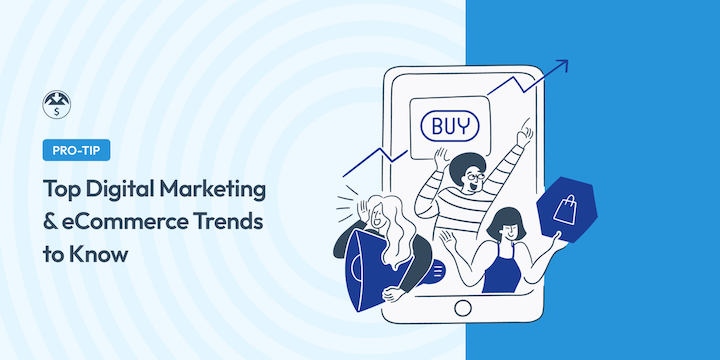
Are you preparing your online business for the top e-commerce trends for 2025?
The digital and e-commerce landscape is constantly evolving. Therefore, it’s crucial to stay ahead of the curve. As we step into 2025, several new trends are set to shape the e-commerce industry in the coming year and beyond.
By understanding and embracing these trends, you can enhance your digital marketing efforts, improve customer experiences, and drive sales.
🔎 In this article, I’ll cover:
Why Adopt Digital E-Commerce Trends?
Staying current with trends isn’t just a good idea; it’s crucial for survival and growth. Let’s look at some of the biggest reasons to adopt e-commerce trends for 2025.
- Gain a competitive advantage. By adopting new trends before your competitors, you’ll offer a fresh and differentiated customer experience that sets you apart, attracts attention, and fosters brand loyalty.
- Enhance the customer experience. Customers today are tech-savvy and expect seamless, personalized experiences. In fact, research found that 65% of shoppers expect online retailers and businesses to adapt to their changing needs and preferences.
- Increase reach and visibility. New trends often involve emerging platforms and technologies. By staying at the forefront of e-commerce, you’ll gain visibility, attract attention, and boost brand awareness.
Remember that trends aren’t simply fads. Rather, They represent advancements and shifts in consumer behavior that shape the future of e-commerce. Therefore, staying informed and proactively adopting relevant trends can unlock new opportunities, build a competitive edge, and thrive in the world of e-commerce.
Top E-Commerce Trends for 2025
Ready to get into it? In the following sections, I’ll discuss some of the biggest e-commerce industry trends for 2025 that you can expect to see and prepare for. I’ll also explain the importance of these trends and provide some ways you can apply them to your own business.
1. Personalized Shopping Experiences
Personalization—the practice of tailoring marketing messages and experiences to individual customers—has been a buzzword in marketing for years. But it’s only now that technology is making it truly possible to deliver personalized experiences at scale.
In 2025, expect to see even more personalized marketing campaigns, product recommendations, and e-commerce site experiences. This requires businesses to collect and analyze more customer data. But the rewards will be worth it.
For instance, personalized product recommendations can help shoppers find the products they are most interested in. Also, tailored email marketing campaigns can drive more engagement and conversions.
Aim to ensure every interaction along the customer journey feels uniquely crafted. This applies to both existing and potential customers and omnichannel experiences across in-store and online channels.
2. Artificial Intelligence (AI)
AI is already having a major impact on digital marketing. Its role is only going to grow. AI can be used throughout a range of touchpoints along the online shopping journey.
You can leverage it to automate e-commerce marketing tasks, such as campaign creation and management, and personalize customer experiences. AI algorithms analyze vast amounts of data, including customer demographics, purchase history, and website behavior, to identify patterns and make intelligent decisions.
Also, predictive analytics and machine learning algorithms can anticipate consumer needs and optimize product listings and pricing.
Automation and AI-powered chatbots are increasingly prominent top e-commerce trends for 2025 and beyond. They can provide 24/7 customer service, understand customer inquiries, and provide relevant responses.

Chatbots also integrate with customer service databases to access order information and resolve issues. For example, A chatbot might assist a customer in tracking an order, checking product availability, or initiating a return process. This provides efficient customer support, reduces response times, and enhances the overall shopping experience.
3. Voice & Image Search
Another essential aspect of e-commerce trends to expect is voice search and image search optimization.
Voice search is the use of voice commands and speak-to-text technology to search the internet. It’s a more natural and convenient way to search for information.
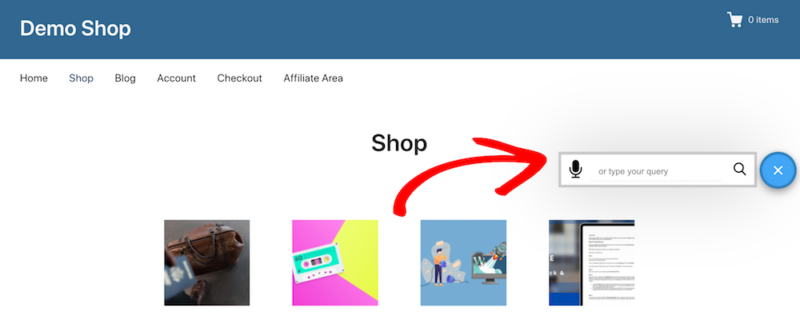
According to Statista, voice-assistant users reached over 150 million users in the U.S. alone!
Make sure your website is optimized for voice search by using natural language keywords and structured data markup. Consider creating voice-activated product demos and customer support chatbots.
Image search is also becoming more prevalent. It allows users to search for products or other items by uploading an image or using a visual description.
An online shopper might use image search to find a product similar to one they’ve seen in a magazine. Meanwhile, a voice assistant can be used to search for recipes or product reviews without typing.
4. Augmented Reality (AR) & Virtual Reality (VR)
Augmented reality (AR) and virtual reality (VR) are still in their early stages. But they have the potential to revolutionize e-commerce.
AR is a technology that superimposes a computer-generated image on a user’s view of the real world. VR technology immerses a user in a simulated environment, typically through a headset or other device.

For example, AR can be used to allow customers to try on products virtually. VR can be used to allow customers to explore stores in a 3D environment that mimics walking around the physical store.
5. Social Commerce
Social selling is booming. More businesses are making their products available for purchase on social media platforms like Instagram and TikTok.
Social commerce refers to the seamless integration of shopping experiences into social media platforms. Customers can browse products, view product reviews, and checkout directly within their social media feeds without leaving the platform.
An Instagram user might discover a new product through a shoppable post, read reviews in the comments section, and purchase the product without leaving the Instagram app.
Perhaps you’re not ready to switch from primary e-commerce platforms like your website to social channels. That’s okay. After all, a research study found that 53% of shoppers are finding it increasingly difficult to trust products sold through social media.
However, you can (and should) use social media to grow brand awareness, engage with your customers, and build relationships.
A WordPress plugin like Smash Balloon makes it easy to aggregate and integrate your social feeds on your e-commerce site:

Additionally, direct messages (DMs) on platforms like Instagram, Facebook Messenger, and X/Twitter are increasingly being used for customer service interactions. This provides a more personalized and convenient way for customers to resolve issues or seek assistance.
Customers can send DMs to a brand’s social media accounts to inquire about products, request order updates, or report problems. Then brand representatives can respond promptly and address customer concerns directly.
6. Quick & Convenient Checkouts
Providing a smooth, hassle-free shopping experience is more important than ever. Primarily, this means ensuring your online store delivers a seamless user experience on desktops, smartphones, and other mobile devices.
It should be easy to use and navigate and include search functionality. It’s also essential to optimize the checkout process to be as quick and straightforward as possible.
One way to do this is to use a reliable payment gateway like Stripe. Stripe lets users save their payment details for future purchases. Additionally, it supports multiple payment methods so shoppers can choose the one most convenient for them.
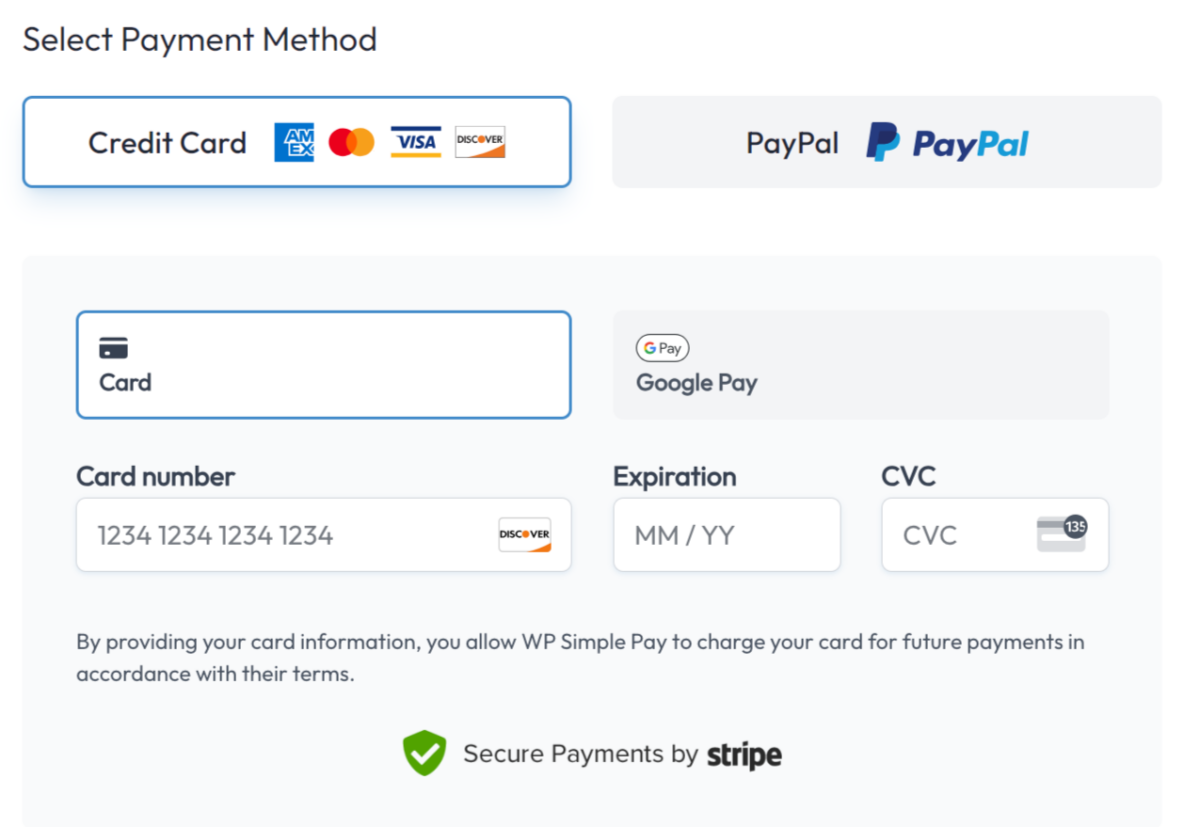
This includes debit and credit cards, digital wallet payments, and pay-later options.
In addition to offering multiple payment options, create a clean and concise checkout page with as few steps as possible. Only ask shoppers for necessary information. Minimizing friction can help reduce shopping cart abandonment and increase conversion rates.
7. User-Generated Content (UGC)
User-Generated Content (UGC) is one of the most helpful digital marketing trends. You can use it to incorporate content marketing, SEO, and storytelling into your marketing strategies.
UGC is content created by consumers, such as product reviews, social media posts, or blog articles. It provides real-world perspectives and opinions from actual people, fostering trust and credibility. Brands can curate and showcase UGC to demonstrate product usage, address customer concerns, and build a sense of community.
8. Micro-Influencer Marketing
As far as e-commerce trends surrounding influencers, expect to see the dynamics of influencer marketing transform, moving toward authenticity and relevance.
Brands will continue to seek micro-influencers and nano-influencers with niche audiences. These individuals can create reviews, tutorials, or promotional posts to help you reach your target audience.

But influencer marketing campaigns must prioritize authenticity and engagement over reach.
Younger generations like Gen Z care deeply about social responsibility. This translates to a demand for transparency and authenticity. Gone are the days of polished ads and hidden partnerships. Instead, audiences crave real experiences, honest reviews, and connections with relatable individuals.
Sustainability and ethical practices are crucial. Therefore, expect online sellers, influencers, and shoppers to embrace eco-conscious brands and open conversations about conscious consumption.
It’s also likely that we’ll see micro-influencers, trusted for their niche expertise and genuine voices, rise in prominence. In other words, influencers who embrace transparency, advocate for positive change, and prioritize real connections win over a value-driven audience.
9. Subscription-Based Models
Subscription-based models provide customers with recurring access to products or services for a regular fee. This can be an attractive option for both businesses and consumers. It offers predictable revenue streams and convenient access to goods or services.

Customers subscribe to a service and receive ongoing deliveries, access to content, or usage privileges. Also, subscription models can be tailored to various industries, from meal delivery services to streaming platforms.
Their convenience, recurring revenue potential, and ability to foster customer loyalty and retention make them a compelling choice for a wide range of businesses.
If you use WordPress, there are plenty of membership plugins to choose from.
Easy Digital Downloads offers multiple extensions that can help with selling memberships and subscriptions, including All Access Pass and Recurring Payments.
10. Cross-Selling
Cross-selling is a sales technique (often seen on Amazon) that encourages customers to purchase additional items related to their initial purchase. It involves recommending complementary products that enhance the overall shopping experience and increase the average order value.
Cross-selling strategies often utilize product recommendations based on purchase history, browsing behavior, and product affinities. For instance, if a customer buys a laptop, cross-selling might suggest a mouse, carrying case, or external hard drive as complementary items.
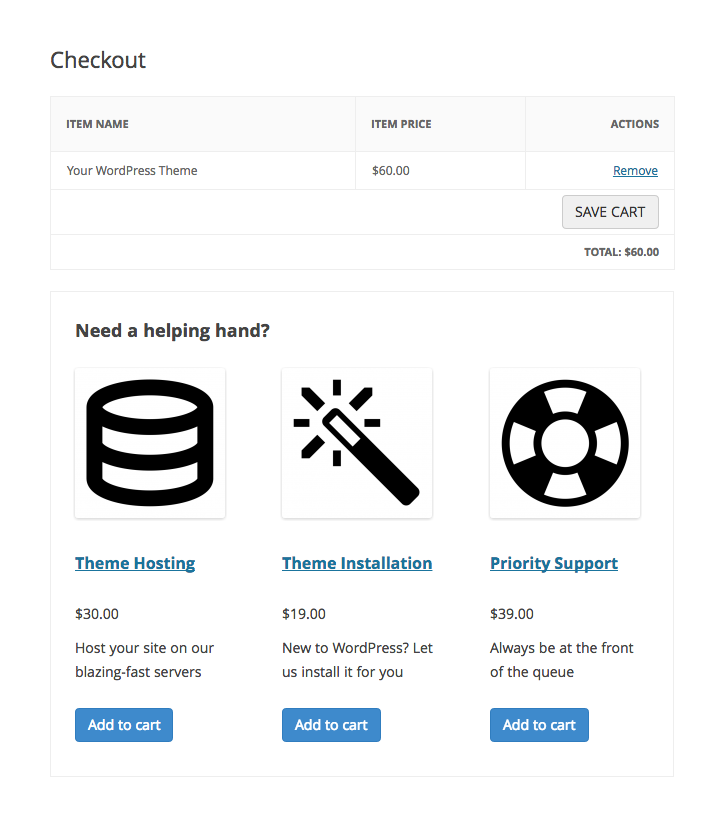
Thanks to advanced personalization and AI techniques, cross-selling will continue to be among the most crucial e-commerce trends for 2025. Incorporating it can make your sales channels more effective, driving higher revenue and increasing customer satisfaction.
Check out the EDD Cross-sells and Upsells extension to learn how to incorporate it into your WordPress site with ease.
11. Short-Form Videos
Video is one of the most engaging forms of content, and it’s becoming increasingly important for e-commerce businesses. In 2025, create more video content, such as product demos, customer testimonials, and behind-the-scenes videos. Share your videos on social media and your website.
Short-form videos capture attention quickly and effectively convey information in a visually appealing manner. So it makes sense that short-form video platforms like TikTok and Instagram Reels are becoming powerful tools for educating shoppers and influencing purchasing decisions.

Brands can create engaging video content to showcase products, demonstrate their features, and provide tutorials or styling tips. For instance, if you’re a beauty brand, you might create a short video tutorial on how to apply a particular makeup product.
12. Instant Analytics
Data is the key to success in digital marketing. Instant analytics refers to the ability to access and analyze real-time data. Then use the data to gain insights into customer behavior, business performance, and marketing effectiveness.
In 2025, collect and analyze data from your website, social media, and email marketing campaigns.
Utilize data analytics tools like MonsterInsights that provide up-to-date information on website traffic, sales conversions, customer engagement, and marketing campaign performance:
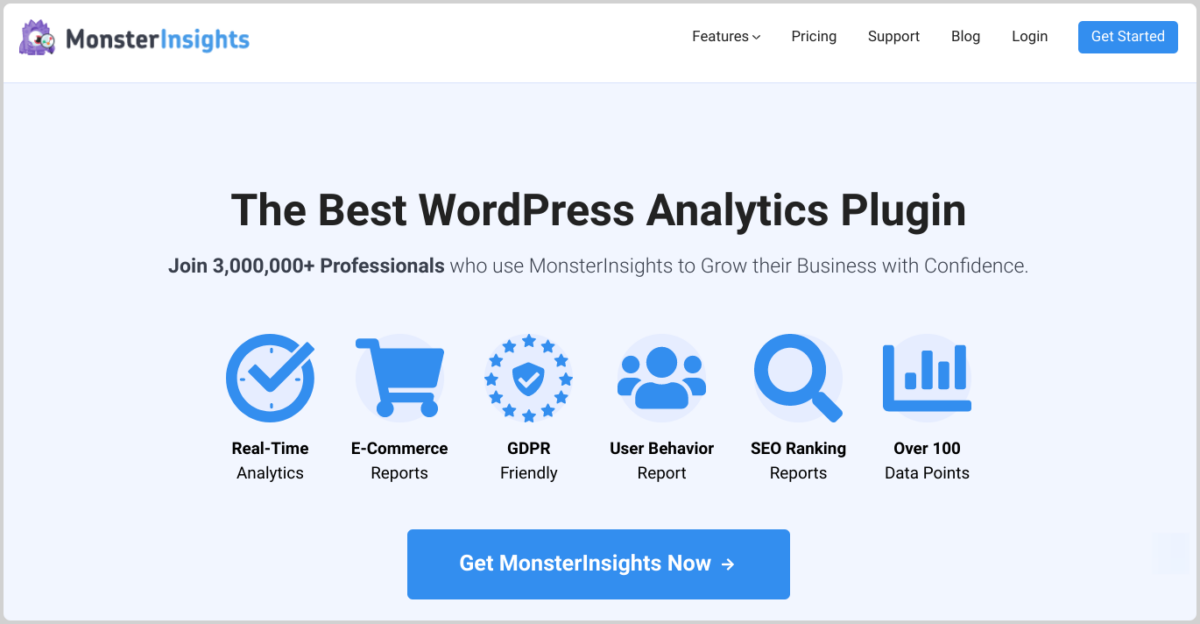
Then use this insight to identify trends, better understand your customers, optimize strategies, and improve overall business outcomes. You can even integrate it with Easy Digital Downloads or WooCommerce and enable enhanced e-commerce tracking.
For instance, for your e-commerce store, you might use instant analytics to monitor customer behavior during a sales campaign, identify popular products, and adjust pricing or promotions accordingly.
13. Sustainable E-Commerce Practices
As I mentioned, millennials, Gen Z, and younger consumers are increasingly conscious about how their consumption impacts the planet. They’re expected to continue to place an amplified emphasis on sustainability in e-commerce practices.
Therefore, it’s important to focus on opportunities to implement eco-friendly practices that meet consumer expectations. This includes everything from the supply chain to sustainable packaging.
14. Loyalty Programs
Loyalty programs often offer points or rewards for purchases, while referral programs provide incentives for referring new customers. These programs can be tiered to provide exclusive benefits for high-value customers.

An airline might offer a loyalty program where customers earn miles for flights, which can be redeemed for future travel or upgrades. An e-commerce brand might incentivize customers to refer friends by offering discounts or exclusive products.
The ability of loyalty and referral programs to nurture customer relationships, drive repeat purchases, and expand customer bases will make them essential tools for long-term business growth.
FAQs About Digital E-Commerce Trends
Let’s wrap up with some frequently asked questions about e-commerce trends.
How can I stay up-to-date on e-commerce trends?
There are several ways to stay up-to-date on the latest e-commerce trends. First, read e-commerce blogs and newsletters. For instance, you can Subscribe to our newsletter for WordPress and e-commerce resources!
Additionally, attend e-commerce conferences and webinars. Follow e-commerce experts and industry leaders on social media.
Finally, whether in-person or online, find opportunities to network with other e-commerce professionals. Diversifying the sources for e-commerce industry trends and news can help ensure you maintain a well-rounded and unbiased view of the digital landscape.
How can I implement e-commerce trends?
The specific steps involved in implementing e-commerce trends will vary depending on the specific trend and your business. For instance, if you sell physical goods, you might be more interested in WooCommerce tools. Alternatively, if you sell digital downloads or products, Easy Digital Downloads is the ideal solution.
However, there are some general steps you can follow. First, research and identify the trends that are relevant to your business.
Then you can assess your current situation and determine the resources you need to implement e-commerce industry trends most relevant to your business. Then you can develop a more comprehensive plan for implementing the trends. Finally, be sure to track and monitor your performance and make adjustments as needed.
What are the challenges of implementing e-commerce trends?
There are several challenges to implementing e-commerce trends. For example, you might struggle with the cost of implementing new technologies or strategies, especially if you’re a startup.
Additionally, some find it difficult to face the need to change existing processes and systems, as well as train employees on new technologies and strategies. Also, without the proper tools in place, you may struggle with measuring the return on investment of some trends.
Use EDD to Adopt to E-Commerce Trends
Although you may now know the latest e-commerce technology and trends you want to leverage, implementing them won’t happen overnight. However, staying on top of the latest industry trends and knowing what to expect can help you adapt and evolve for sustainable e-commerce growth.
Don’t have Easy Digital Downloads yet? Grab a pass today to enhance your digital selling experience. Then you can use it to effectively incorporate e-commerce trends and technology into your online business!
What’s next? Explore more ways to scale your e-commerce business. Additionally, you can check out the most common e-commerce mistakes and how to avoid them.
📣 Finally, be sure to subscribe to our newsletter and follow us on Facebook or Twitter for more WordPress resources!
Using WordPress and want to get Easy Digital Downloads for free?
Enter the URL to your WordPress website to install.
Disclosure: Our content is reader-supported. This means if you click on some of our links, then we may earn a commission. We only recommend products that we believe will add value to our readers.